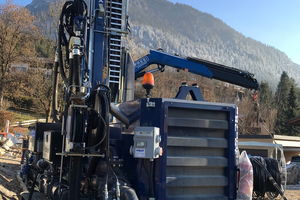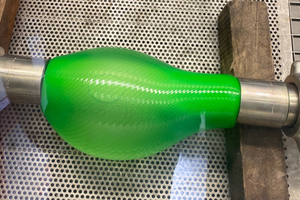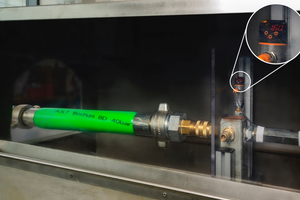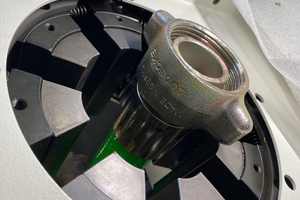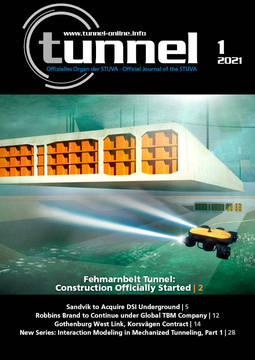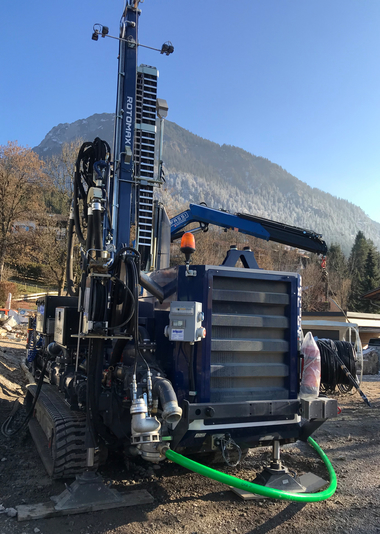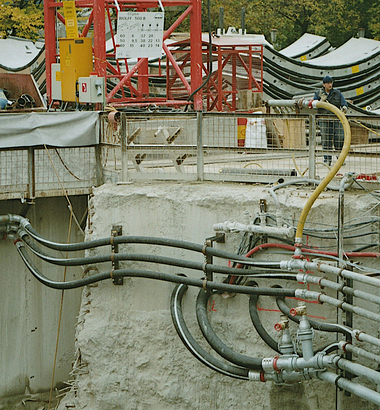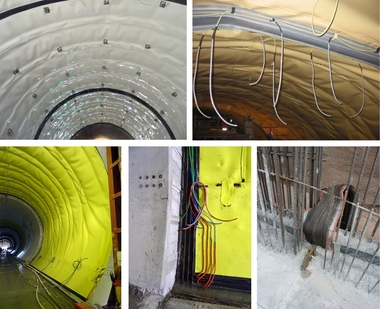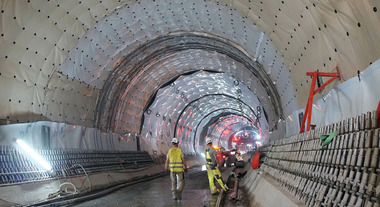Safe Hose Lines for Modern High-Pressure Compressors
The issue of connecting common hose lines to modern high-pressure compressors has already been described in detail in tunnel 5/2019. Dangerous situations and incidents with fatal outcomes have since led to the development of a high-pressure flat hose system with safe fittings.
The use of air compressors with high operating pressures has become routine on many construction sites above and below ground, but this can easily lead to a dangerous situation or even accidents with personal injury.
Problems mostly occur when connecting 2-inch hose lines to modern high-pressure compressors that can operate at up to 40 bar. Here, standard solutions with hose clamps, with which an operating pressure of up to 25 bar was previously possible without any problems, are no longer feasible. The high pressures cause extremely high temperatures, especially at the compressor outlets. Here, even proven hose assemblies, which are normally suitable for these high pressures, fail – especially in the area of layflat hoses. The fittings, which are themselves resistant to pressure and heat, detach from the hoses because the hose material becomes soft. Conical fittings are basically suitable for these applications, but especially in regard to layflat hoses, the integration and the contour of the hose nozzle must be adapted exactly to the respective hose used.
Development of the Fitting and Hose System
The supplier of fittings, hose and tunnel technology A.S.T. Bochum, the hose manufacturer Gollmer & Hummel and the fittings manufacturer Lüdecke (all from Germany) recognised the problem at an early stage and developed a safe system of layflat hose and coupling. Since the already pressure- and heat-resistant fitting was not the weak point, but the hose becoming soft, an improved hose material had to be found that could be pressed safely with the fittings.
Silicone hoses have a high heat resistance, but have a very low pressure rating that cannot be easily increased. Metal hoses (such as exhaust hoses) could be made pressure-resistant, but these hoses would become very stiff and heavy. In addition, each length would have to be woven individually. Both the time required and the high costs due to individual production would be unacceptable.
In the development of a lightweight, heat- and pressure-resistant layflat hose, the characteristics of the hose material were considered on the one hand in order to ensure the optimum interaction of fitting, hose and ferrule. On the other hand, the experienced technicians paid increased attention to a practicable crimping process in order to reduce time and costs. After several test runs with different hose materials and fittings, a hose system was developed that is both pressure and heat resistant.
New Complete Fitting with Layflat Hose
The new system is designed for the use of compressed air and liquid media at maximum operating pressures up to 40 bar and temperatures between -30 ºC and +80 ºC. The complete fittings are made of steel and malleable cast iron and the high-pressure layflat hose is equipped with hose nozzle and ferrules.
First applications on construction sites have confirmed the high safety margins and the robust construction of the system. The hose is very light and compact to handle, but still able to withstand the tough construction site conditions and is highly resistant to abrasion. The application of pressure worked without any problems in numerous applications.
For assembly, when using ferrules, it is important to ensure that the specified maximum operating pressure for the ferrule, fitting and hose is not exceeded. Only trained personnel should attach the ferrule to the hose and hose connector using a suitable hydraulic press. Before each use, the complete hose assembly should be checked for damage. For safety reasons, it is recommended to use additional hose securing sleeves or cables.
Conclusion
A clear distinction should be made on the construction site. For applications up to 25 bar operating pressure, the tried and tested system solutions with hose clamps can be used. For applications with up to 40 bar operating pressure, it is advisable to connect the hose with hydraulically pressed steel ferrules and matching hose nozzles, taking into account the operating temperatures. Especially hoses with plastic components change their properties at high temperatures and can start to „flow“. This must be prevented at all times.

